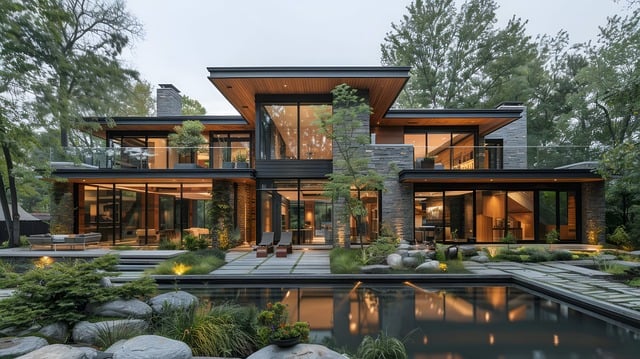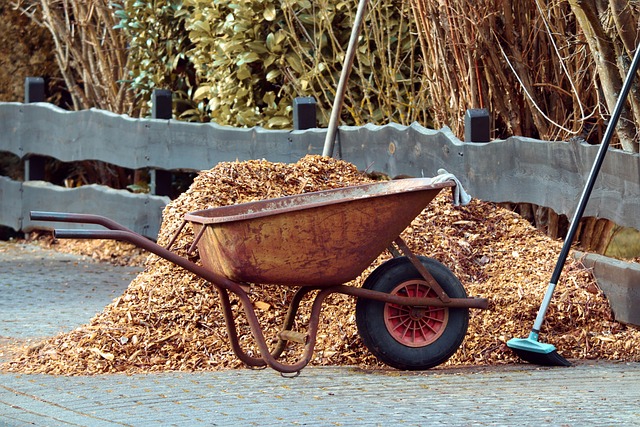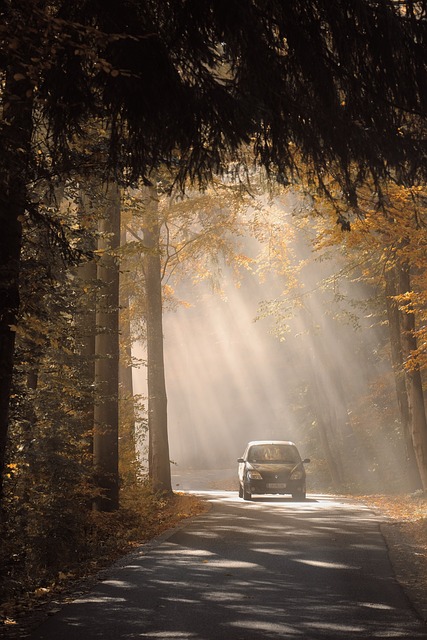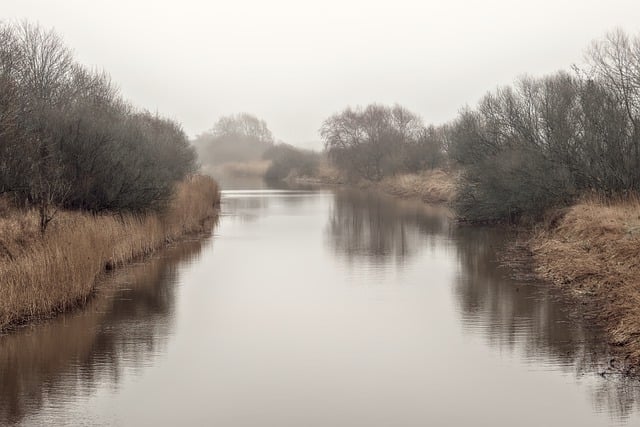When crafting a sustainable and visually appealing landscape, selecting the right material from the array of options available is key. The best materials for landscaping should be both durable and environmentally friendly, minimizing the ecological footprint while enhancing the aesthetic appeal. Natural stone stands out as an ideal outdoor hardscape material due to its longevity and eco-friendly nature, complementing various garden styles and withstanding environmental elements. For areas with different precipitation patterns, gravel's permeability makes it a better choice in arid regions, while mulch is more beneficial in areas with moderate rainfall as it helps conserve moisture and enrich the soil. Modern landscape supplies like concrete pavers and interlocking bricks offer design versatility and frost resistance but may require maintenance to maintain their appearance. Eco-friendly landscaping materials such as recycled plastic composites and permeable paving solutions are becoming popular for their water conservation properties and environmental benefits, making them ideal for the environmentally conscious. Ultimately, choosing from landscape material options like natural stone, gravel, or mulch involves considering both immediate aesthetic needs and long-term sustainability to ensure that the chosen materials align with eco-friendly living principles and support a healthy environment.
When shaping the aesthetic and functionality of outdoor spaces, the choice of landscape material options becomes a pivotal decision. This article delves into the critical aspects of selecting materials that not only stand the test of time but also harmonize with the local climate. We will explore the durability of various outdoor hardscape materials, the environmental impact of modern landscape supplies, and the benefits of eco-friendly landscaping materials. From evaluating climate compatibility to understanding the pros and cons of different materials, we aim to guide you through the best materials for landscaping that ensure longevity and sustainability. Join us as we examine gravel vs mulch, celebrate the timeless appeal of natural stone for landscaping, and appreciate the role of sustainable landscape materials in contemporary designs. Whether you’re designing a new hardscape or updating an existing one, this article will provide valuable insights to enhance both the enduring beauty and ecological integrity of your outdoor spaces.
- Evaluating Climate Compatibility in Landscape Material Options
- The Pros and Cons of Outdoor Hardscape Materials for Longevity
- Eco-Friendly Landscaping Materials: A Guide to Sustainable Choices
- Comparing Modern Landscape Supplies: Gravel vs Mulch for Durability and Ecological Impact
Evaluating Climate Compatibility in Landscape Material Options

When embarking on a landscape project, selecting the most suitable materials from among the various landscape material options is paramount for longevity and environmental compatibility. The best materials for landscaping should not only enhance the aesthetic appeal but also withstand the local climate’s fluctuations. Outdoor hardscape materials, such as natural stone for landscaping, offer a durable and timeless option that can endure weather extremes while maintaining a refined look. Eco-friendly landscaping materials, particularly those derived from renewable sources, contribute to sustainability and reduce the carbon footprint of the project.
In assessing climate compatibility, it’s crucial to consider regional precipitation levels when choosing between gravel vs mulch. Mulch retains moisture and enriches soil, making it a favored choice in areas with moderate rainfall. Conversely, gravel performs optimally in arid climates, where its permeable nature aids in water drainage and prevents standing water that could otherwise damage plant roots. Modern landscape supplies should be carefully selected not only for their visual impact but also for their ability to integrate seamlessly with the local environment, ensuring the longevity of the landscape and its resilience against climate change effects.
The Pros and Cons of Outdoor Hardscape Materials for Longevity

When contemplating landscape material options for outdoor hardscapes, it’s crucial to consider the best materials for landscaping that will withstand various environmental conditions and stand the test of time. Natural stone for landscaping often emerges as a top choice due to its inherent durability and aesthetic appeal. It offers a timeless look that complements a range of garden designs while resisting weather-related wear and tear, making it a sustainable landscape material with a long lifespan. On the other hand, gravel vs mulch presents a contrast in low-maintenance options; gravel is known for its excellent drainage properties and resistance to compaction, which can be advantageous in areas with high foot traffic or heavy rainfall. Mulch, while offering superior soil health benefits and an organic touch, requires more frequent replacement as it degrades over time, which may not align with the goals of eco-friendly landscaping materials.
Modern landscape supplies have evolved to include a variety of materials that are both functional and environmentally conscious. Among these, concrete pavers and interlocking bricks offer an array of design possibilities while being highly resistant to frost heave and subsidence. However, they may necessitate sealing to maintain their appearance over the years. In comparison, eco-friendly landscaping materials like recycled plastic composites or permeable paving options can mitigate environmental impact by reducing water runoff and conserving natural resources, making them a modern choice for those prioritizing sustainability in their outdoor hardscape materials.
Eco-Friendly Landscaping Materials: A Guide to Sustainable Choices

When embarking on a landscaping project, selecting eco-friendly and sustainable landscape material options is paramount for long-term environmental health and aesthetic appeal. Natural stone for landscaping serves as an enduring choice that reduces the need for energy-intensive processing associated with synthetic alternatives. Its inherent properties offer a durable foundation for outdoor hardscape materials, such as pathways and retaining walls, which can withstand the test of time without compromising the integrity of natural ecosystems.
In contrast to traditional landscaping materials, modern landscape supplies often include recycled content and are designed to minimize ecological footprints. For instance, gravel vs mulch presents a choice between two options that offer different benefits: gravel’s permeability aids in water conservation, while mulch enhances soil health and plant growth. Both materials, when sourced responsibly, contribute to a sustainable landscape by supporting biodiversity and conserving resources. Eco-conscious landscapers increasingly favor these best materials for landscaping that align with the principles of eco-friendly living. Opting for materials like recycled concrete or locally-sourced gravel not only reduces transportation emissions but also supports local economies, making them a smart and sustainable choice for any outdoor space.
Comparing Modern Landscape Supplies: Gravel vs Mulch for Durability and Ecological Impact

When considering modern landscape supplies and their impact on both longevity and ecology, homeowners and landscapers alike are faced with a plethora of material options. Among the most debated are gravel and mulch, each offering distinct advantages and considerations for sustainable landscaping practices. Gravel, a form of outdoor hardscape materials, is known for its durability and low maintenance requirements, making it a popular choice for paths, driveways, and as a ground cover in areas with little vegetation. Its longevity ensures that it minimizes disturbance to the soil, which can be beneficial for soil health and biodiversity. On the other hand, mulch, derived from various organic sources such as wood chips or leaves, serves as an excellent medium for retaining soil moisture and controlling weeds, thereby promoting plant growth. It also breaks down over time to enrich the soil with nutrients, which can contribute positively to the ecological balance of a landscape.
In terms of selecting the best materials for landscaping that are both eco-friendly and long-lasting, natural stone for landscaping often stands out as a versatile and sustainable option. It can be used in various applications, from walls and patios to pathways and as decorative accents. Natural stone’s inherent properties mean it requires minimal treatment, reducing the environmental footprint associated with maintenance and upkeep. When comparing gravel vs mulch, it’s clear that each has its place within sustainable landscape practices; however, the choice often comes down to the specific needs of the environment and the intended use within the landscape design. Eco-conscious landscapers should consider the lifecycle of the material, including its origin, how it will be used, and what impact it will have post-use, whether it’s through biodegradation or as a component in landfill ecosystems. Selecting from the modern landscape supplies available requires careful thought about not only the immediate aesthetic and functional needs but also the long-term environmental implications.
When contemplating the ideal landscape material options for any given environment, it’s imperative to consider the local climate’s impact on longevity and sustainability. This article has explored various factors influencing the durability of outdoor hardscape materials, highlighted the benefits and challenges associated with different materials, and provided guidance on selecting eco-friendly landscaping materials that align with modern environmental standards. Through a detailed comparison of natural stone versus gravel and mulch, it’s evident that each material offers distinct advantages in terms of durability, ecological impact, and suitability for diverse climates. Ultimately, the best materials for landscaping are those that not only enhance the aesthetic appeal but also withstand the test of time while respecting the environment. Homeowners and professionals alike should prioritize sustainable landscape materials in their design choices to ensure long-lasting, resilient, and eco-conscious outdoor spaces.
